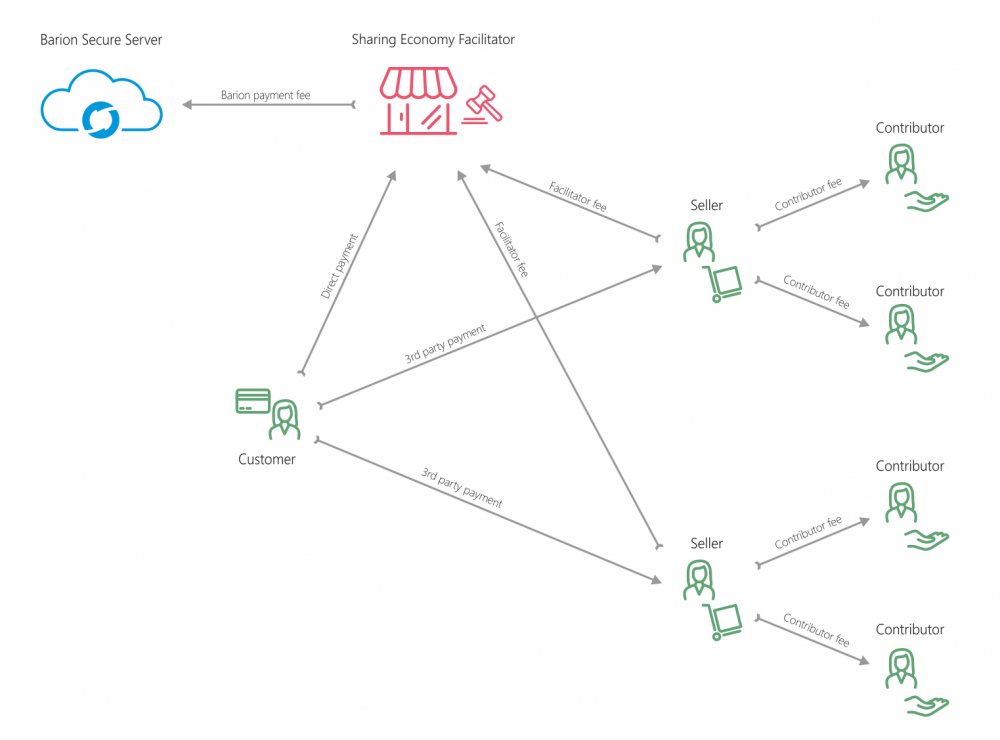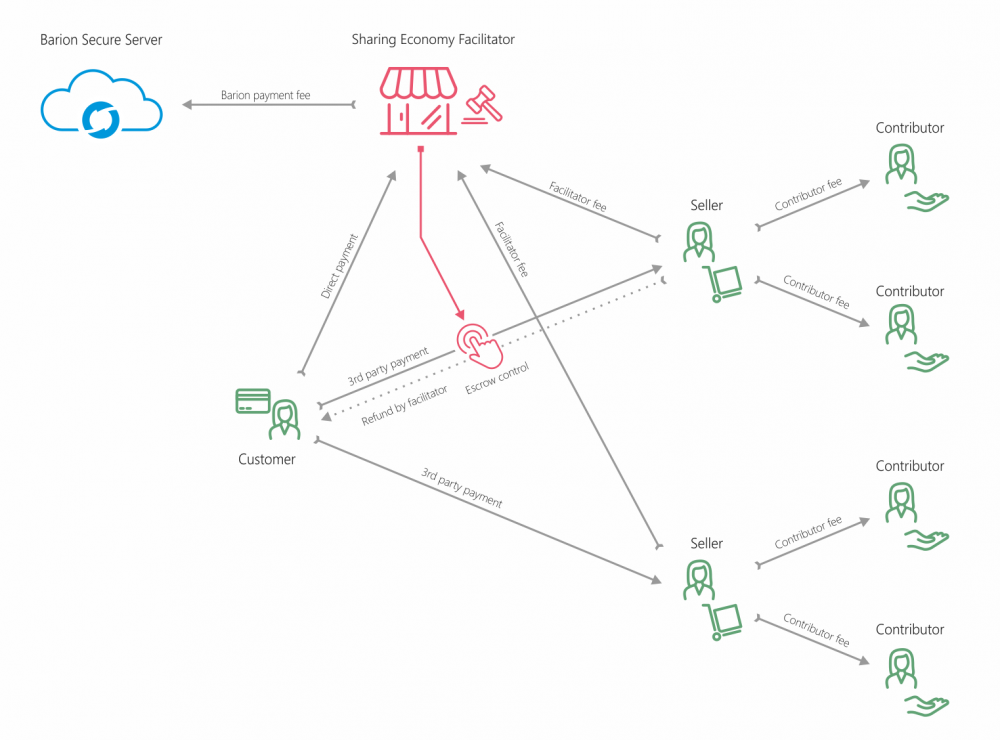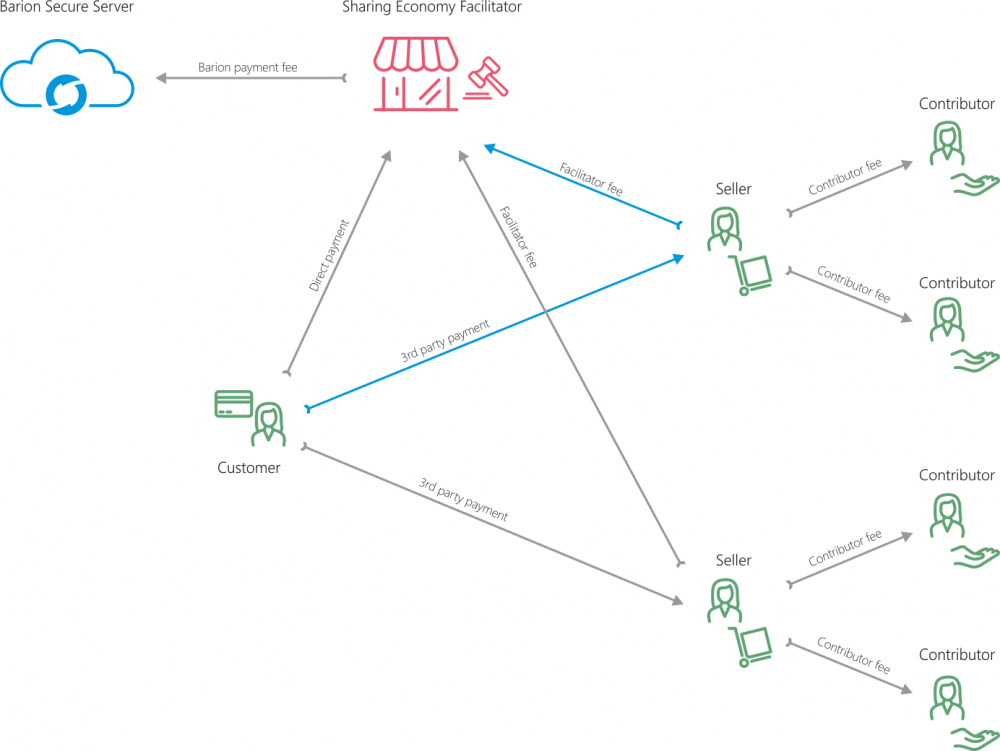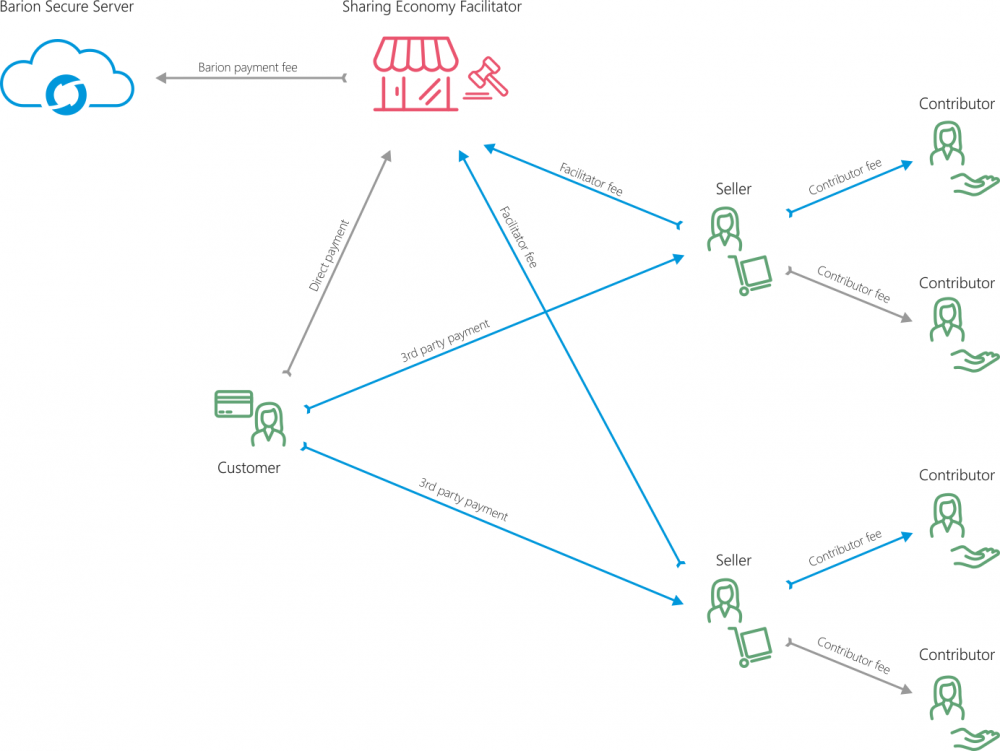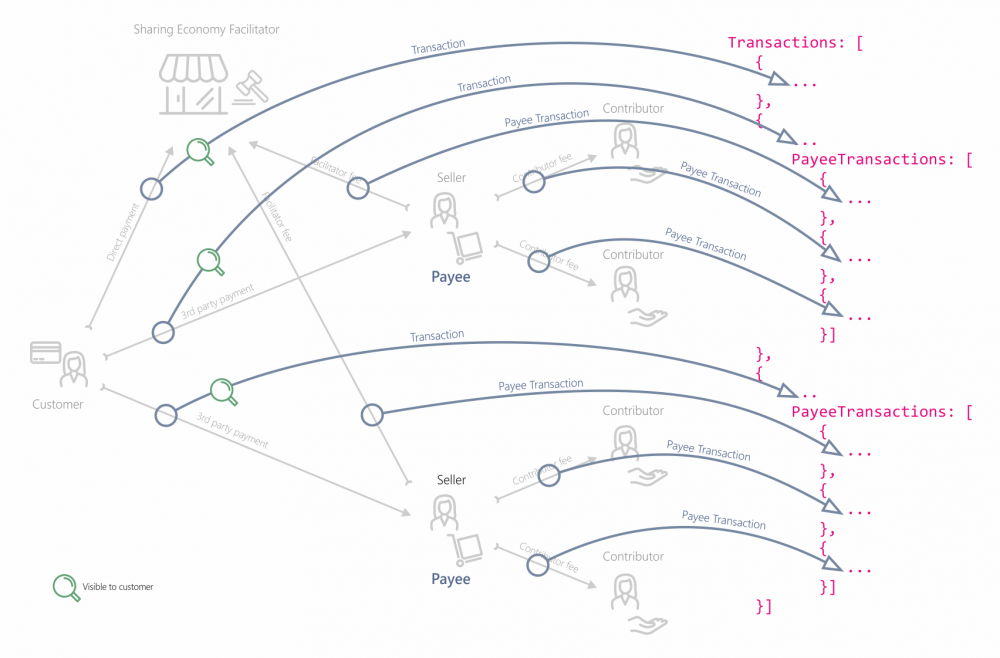C2C Payments: Difference between revisions
No edit summary |
No edit summary |
||
| Line 1: | Line 1: | ||
__NOTOC__ | __NOTOC__ | ||
{{PageTitle|title=Sharing economy payments}} | {{PageTitle|title=Sharing economy payments}} | ||
In certain business models, such as Sharing Economy business models, Barion is able to facilitate payments between users of the system. The Customer is the user who uses the services of Seller (or multiple Sellers in case of marketplaces) and pays the Seller directly. The Facilitator, the company that facilitates the service is organizing the payment with the Barion API. The Facilitator is able to transfer a fee from each payment to herself and to one or more Contributors. The Customer does not need a Barion account, but the Seller and Contributors do. Barion transaction fees are always covered by the Facilitator, no other parties pay transaction fees. | |||
==Sharing economy overview== | ==Sharing economy overview== | ||
[[file:Sharing-economy.png|1000px]] | [[file:Sharing-economy.png|1000px]] | ||
The Facilitator has the option to control the payment of the Customer to Seller, by placing the sum in an escrow and decide about fulfillment at a later time, such as when the delivery is confirmed. The funds can be partially or completely refunded to the Customer in case Seller does not deliver properly. | |||
==C2C with escrow== | ==C2C with escrow== | ||
[[file:sharing-economy-escrow.png|1000px]] | [[file:sharing-economy-escrow.png|1000px]] | ||
If "Uber" was using Barion, the passenger would be the Customer, and the Driver would be the Seller. "Uber" would ask for a fee from the driver, as the blue lines indicate. Barion transaction fees would be payed by "Uber". Drivers would need a Barion account set up before the first ride. Automatic charging would be solved by Barion Token Payment. | |||
=="Uber" style simple sharing economy example== | =="Uber" style simple sharing economy example== | ||
[[file:sharing-economy-uber.png|1000px]] | [[file:sharing-economy-uber.png|1000px]] | ||
This example shows a marketplace, where multiple Sellers sell goods or services to the Customer, and both the Facilitator and third party agents receive a fee. | |||
=="Marketplace with agents" sharing economy example== | =="Marketplace with agents" sharing economy example== | ||
[[file:sharing-economy-marketplace.png|1000px]] | [[file:sharing-economy-marketplace.png|1000px]] | ||
The following diagram helps developers match the C2C payment structure the the API Json structure. | |||
==C2C transactions mapped to API structure== | |||
[[file:sharing-economy-api-mapping.png|1000px]] | |||
Revision as of 20:21, 23 April 2017
Sharing economy payments
In certain business models, such as Sharing Economy business models, Barion is able to facilitate payments between users of the system. The Customer is the user who uses the services of Seller (or multiple Sellers in case of marketplaces) and pays the Seller directly. The Facilitator, the company that facilitates the service is organizing the payment with the Barion API. The Facilitator is able to transfer a fee from each payment to herself and to one or more Contributors. The Customer does not need a Barion account, but the Seller and Contributors do. Barion transaction fees are always covered by the Facilitator, no other parties pay transaction fees.
Sharing economy overview
The Facilitator has the option to control the payment of the Customer to Seller, by placing the sum in an escrow and decide about fulfillment at a later time, such as when the delivery is confirmed. The funds can be partially or completely refunded to the Customer in case Seller does not deliver properly.
C2C with escrow
If "Uber" was using Barion, the passenger would be the Customer, and the Driver would be the Seller. "Uber" would ask for a fee from the driver, as the blue lines indicate. Barion transaction fees would be payed by "Uber". Drivers would need a Barion account set up before the first ride. Automatic charging would be solved by Barion Token Payment.
"Uber" style simple sharing economy example
This example shows a marketplace, where multiple Sellers sell goods or services to the Customer, and both the Facilitator and third party agents receive a fee.
"Marketplace with agents" sharing economy example
The following diagram helps developers match the C2C payment structure the the API Json structure.
